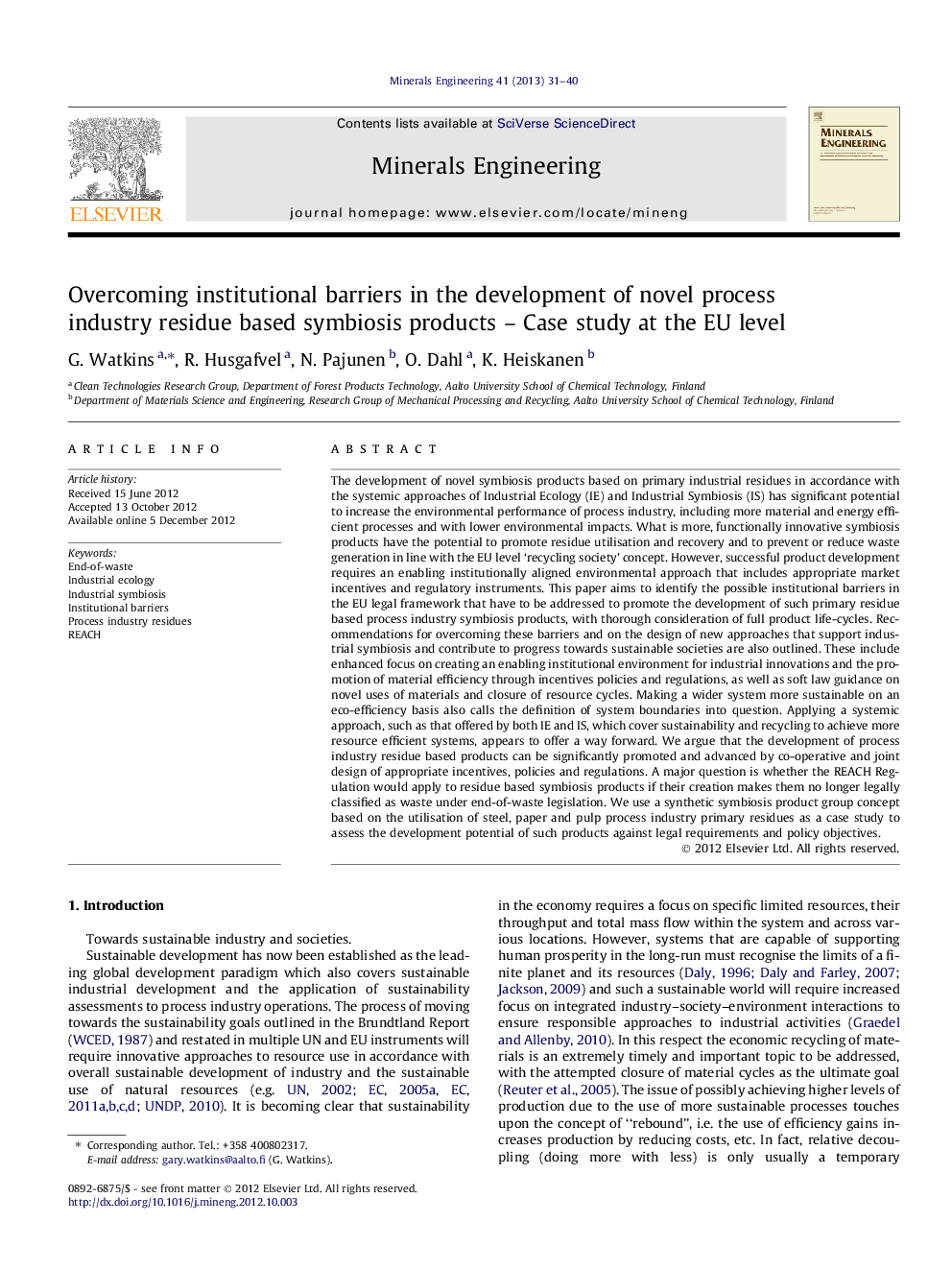| کد مقاله | کد نشریه | سال انتشار | مقاله انگلیسی | نسخه تمام متن |
|---|---|---|---|---|
| 233476 | 465345 | 2013 | 10 صفحه PDF | دانلود رایگان |

The development of novel symbiosis products based on primary industrial residues in accordance with the systemic approaches of Industrial Ecology (IE) and Industrial Symbiosis (IS) has significant potential to increase the environmental performance of process industry, including more material and energy efficient processes and with lower environmental impacts. What is more, functionally innovative symbiosis products have the potential to promote residue utilisation and recovery and to prevent or reduce waste generation in line with the EU level ‘recycling society’ concept. However, successful product development requires an enabling institutionally aligned environmental approach that includes appropriate market incentives and regulatory instruments. This paper aims to identify the possible institutional barriers in the EU legal framework that have to be addressed to promote the development of such primary residue based process industry symbiosis products, with thorough consideration of full product life-cycles. Recommendations for overcoming these barriers and on the design of new approaches that support industrial symbiosis and contribute to progress towards sustainable societies are also outlined. These include enhanced focus on creating an enabling institutional environment for industrial innovations and the promotion of material efficiency through incentives policies and regulations, as well as soft law guidance on novel uses of materials and closure of resource cycles. Making a wider system more sustainable on an eco-efficiency basis also calls the definition of system boundaries into question. Applying a systemic approach, such as that offered by both IE and IS, which cover sustainability and recycling to achieve more resource efficient systems, appears to offer a way forward. We argue that the development of process industry residue based products can be significantly promoted and advanced by co-operative and joint design of appropriate incentives, policies and regulations. A major question is whether the REACH Regulation would apply to residue based symbiosis products if their creation makes them no longer legally classified as waste under end-of-waste legislation. We use a synthetic symbiosis product group concept based on the utilisation of steel, paper and pulp process industry primary residues as a case study to assess the development potential of such products against legal requirements and policy objectives.
► We describe the EU institutional framework for sustainable resource utilisation and recycling.
► We identify and discuss barriers to the development of residue based symbiosis products.
► Case study used to test implications for process and mining industry symbiotic products.
► Enabling institutionally aligned integrated approach needed based on industrial symbiosis.
► New thinking needed to promote development of multi-stream residue based products.
Journal: Minerals Engineering - Volume 41, February 2013, Pages 31–40